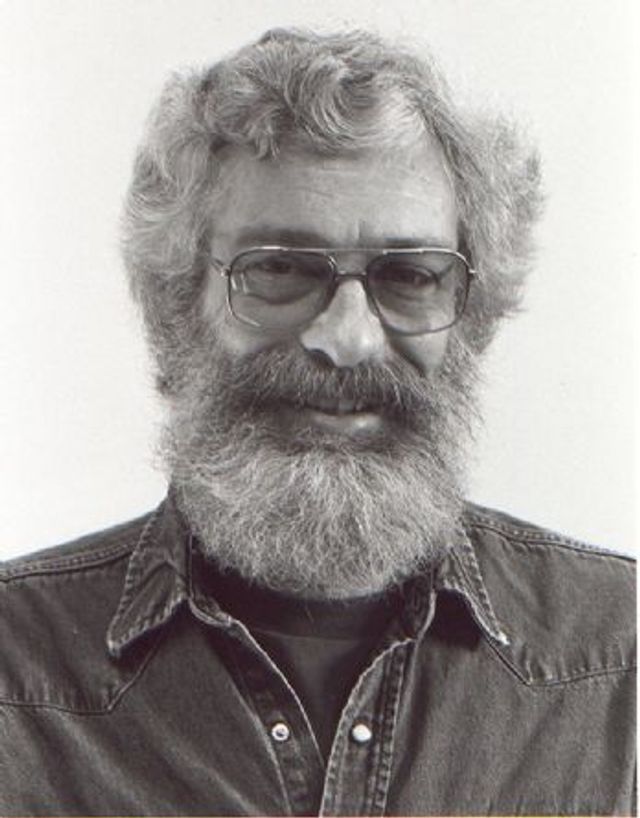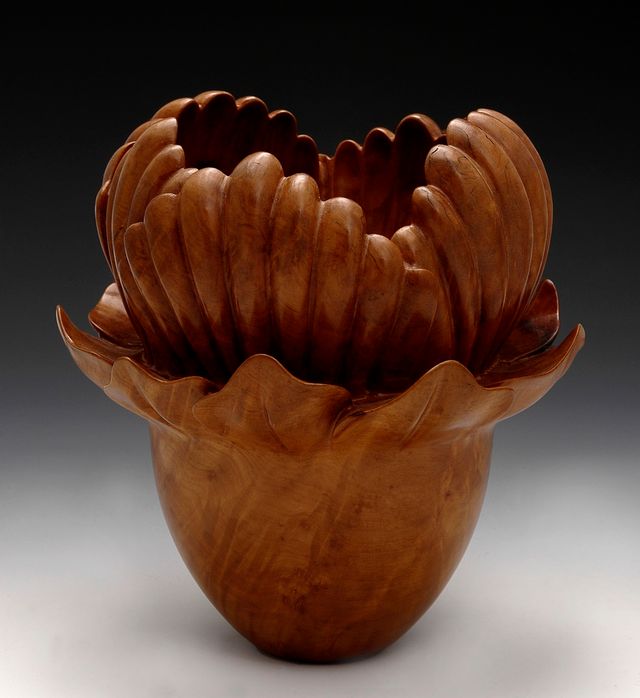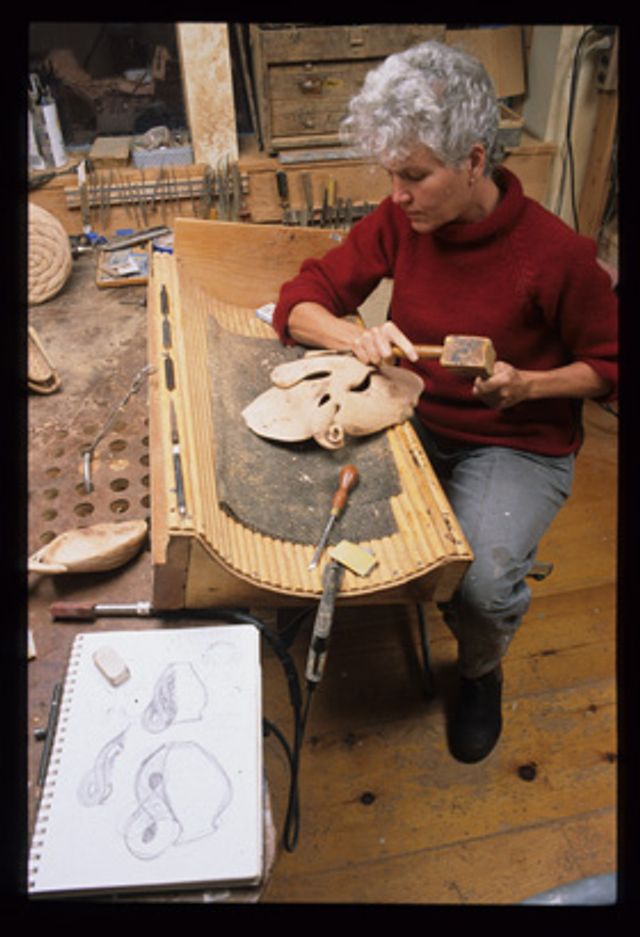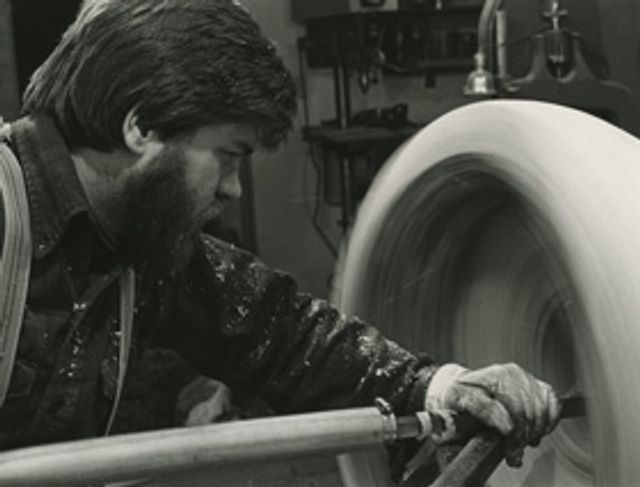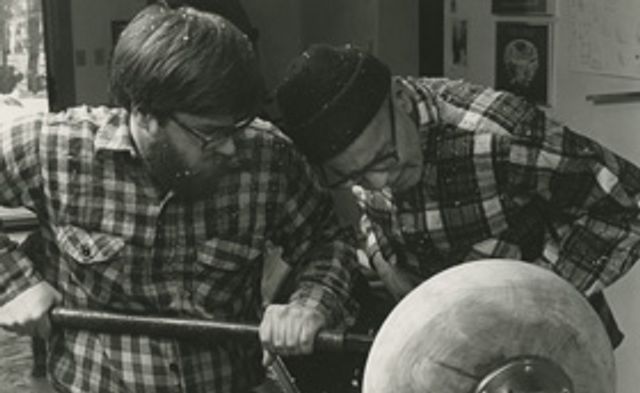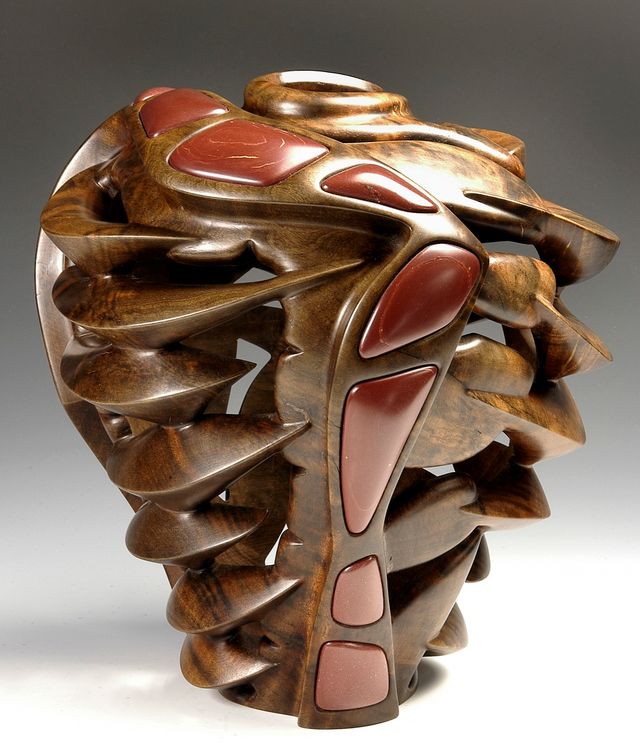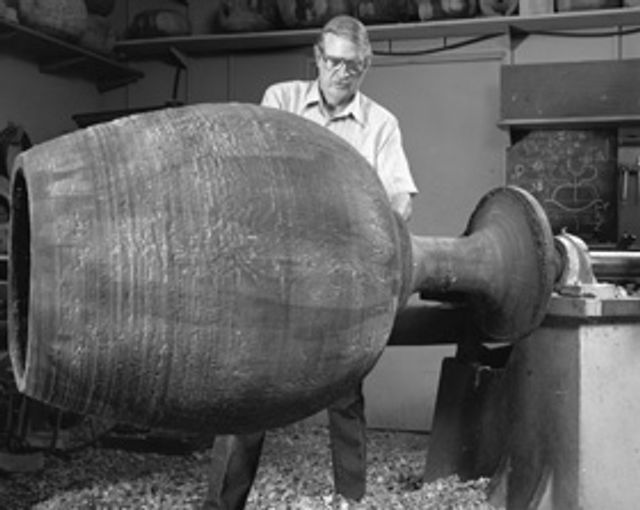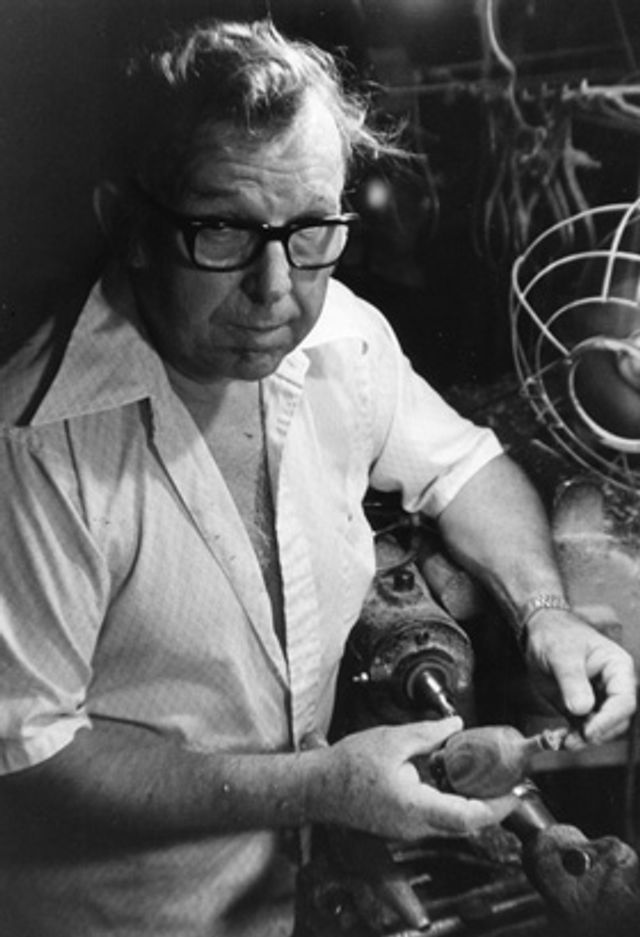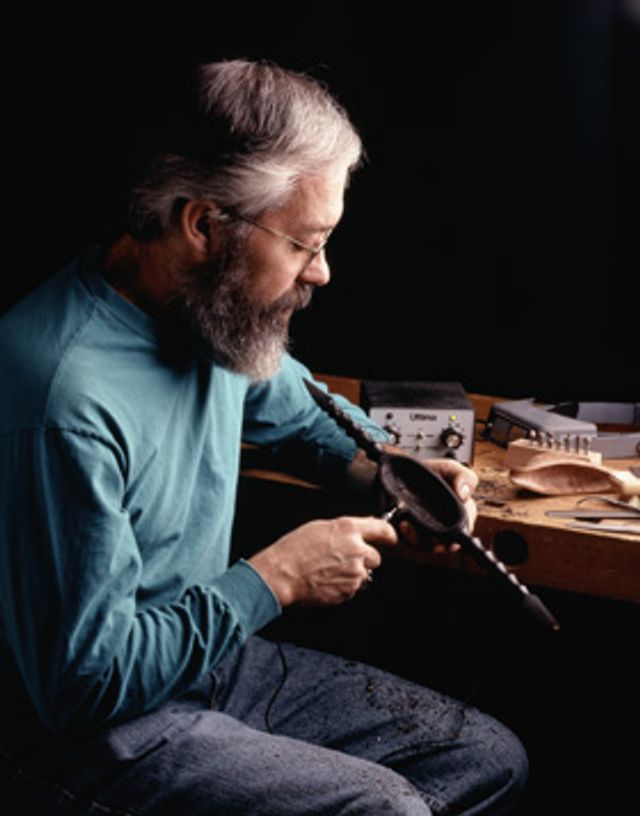A Revolution in Wood: The Bresler Collection
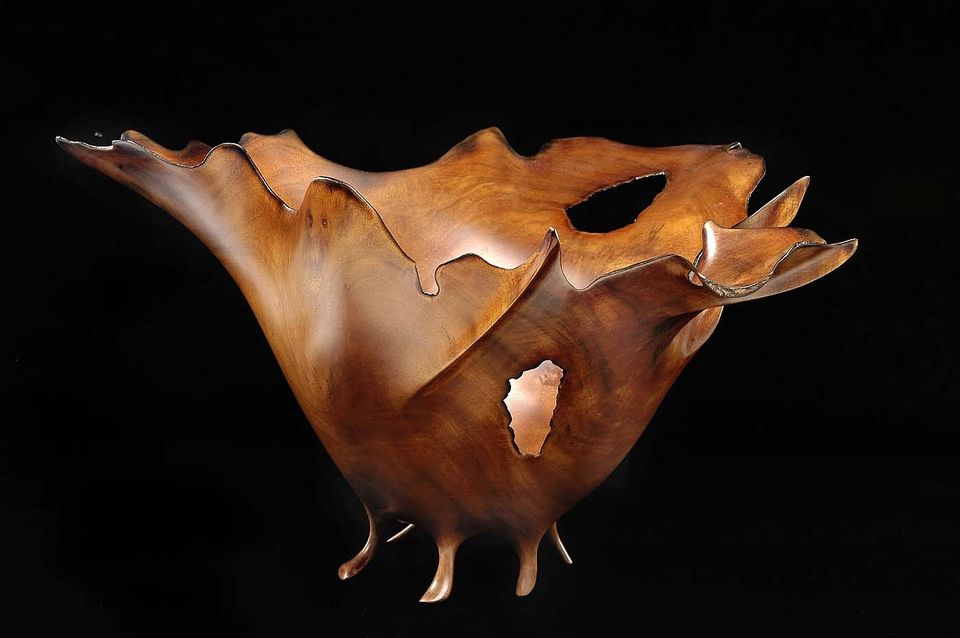
Derek A. Bencomo, Hana Valley, First View, from the "Peaks and Valleys Series", 1995-1997, Smithsonian American Art Museum, Gift of Fleur and Charles Bresler in honor of Kenneth R. Trapp, curator-in-charge of the Renwick Gallery (1995--2003)
A Revolution in Wood: The Bresler Collection celebrates the magnificent gift of sixty-six pieces of turned and carved wood to the Smithsonian American Art Museum by the noted collectors, Fleur and Charles Bresler. Works by some of the best-known wood artists in the United States highlight the expressive capacity of craft’s most organic material, and display wood turning’s growing sophistication. Nearly half of the artworks in the exhibition are on public display for the first time.
Description
Masterpieces by the field's pioneers, including David Ellsworth, William Hunter, Mark and Melvin Lindquist, Edward Moulthrop, and Rude Osolnik, demonstrate the extraordinary range of expression achievable on the lathe, the medium's foundational tool. Compelling recent works by Ron Fleming, Michelle Holzapfel, Hugh McKay, Norm Sartorius, Mark Sfirri, and many others reveal the advent of new techniques, including multi-axis turning, the incorporation of secondary materials, and a strong focus on carving. The Bresler collection illustrates these evolving techniques and aesthetics, which has led to increased use of the term ""wood art"" rather than ""wood turning"" to describe the medium. Nicholas R. Bell, curator at the Renwick Gallery, organized the exhibition.
Visiting Information
Credit
A Revolution in Wood: The Bresler Collection is organized and circulated by the Renwick Gallery of the Smithsonian American Art Museum. The Windgate Charitable Foundation generously supported the publication. The James Renwick Alliance contributed generously to the film, exhibition, and public programs. The Collectors of Wood Art provided funding for the exhibition.
Online Gallery
Artists
David Ellsworth received his MFA from the University of Colorado at Boulder in 1973. Eight years earlier, he had studied architecture for a year at Washington University, St. Louis.
Ron Fleming is a native of Oklahoma. He is a professional illustrator as well as a woodturner. He's received many awards for his work including the Grand Prize in the 1991 American Crafts Awards.
Born in Woonsocket, Rhode Island, Michelle Holzapfel studied at Marlboro College, Vermont, from 1969 to 1970 and from 1993 to 1995 at Vermont College and Norwich University in Vermont, where she earned a B.A. degree.
Born in Long Beach, California, William Hunter earned a B.A. degree in 1972 at California State University at Dominguez Hills. With the purchase of a woodturning table in 1969, he undertook this work as an untutored amateur.
In the early 1970s, Mark Lindquist and his father, Melvin Lindquist, popularized the use of "spalted" (partially decomposed) wood that is characterized by intricate patterns of brown and black lines.
Melvin Lindquist pioneered the use of spalted wood in turned vessels. The fine black lines and blemishes result from the spread of bacteria and mineral deposits in the drying wood.
Born in Cleveland, Edward Moulthrop earned a B.A. degree in architecture in 1939 at Case Institute of Technology and an M.F.A. at Princeton University in 1941.
Considered to be one of the fathers of contemporary wood turning in America, Rude Osolnik is something of a folk hero. Working in Kentucky, he creates robust forms from a variety of woods.
Norm Sartorius left his job as a social worker in Baltimore in the 1970s to live in rural West Virginia. He apprenticed to a woodworker for six months and learned to carve letter openers, shoehorns, canes, and spoons.














